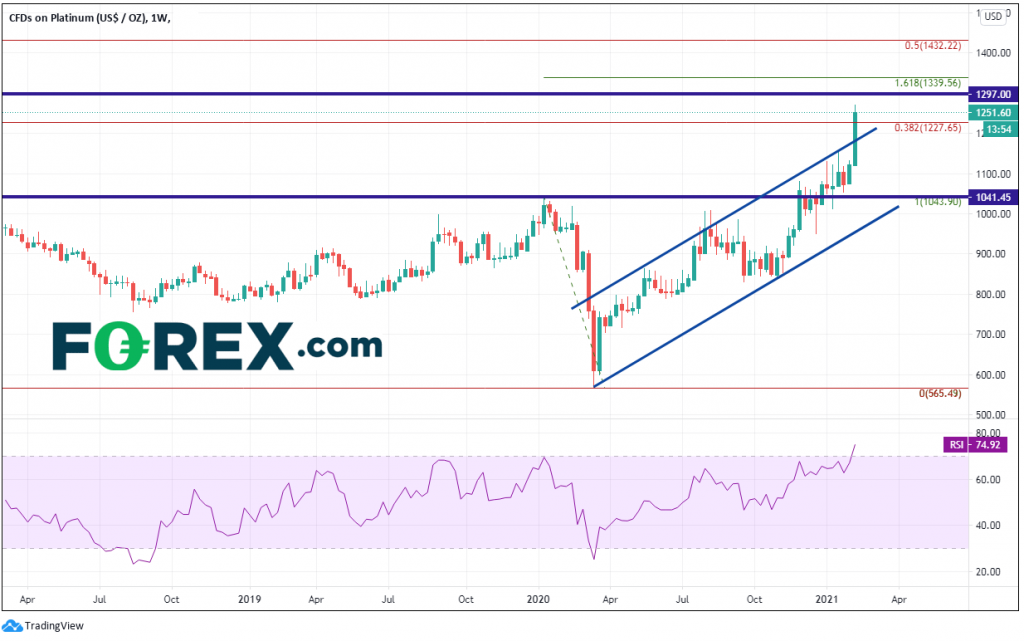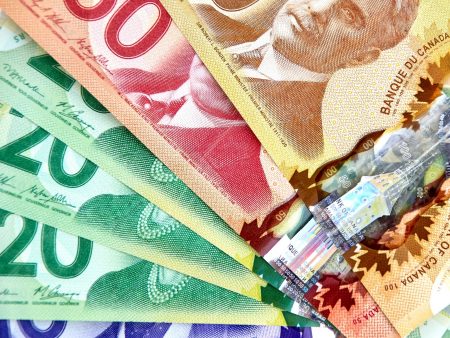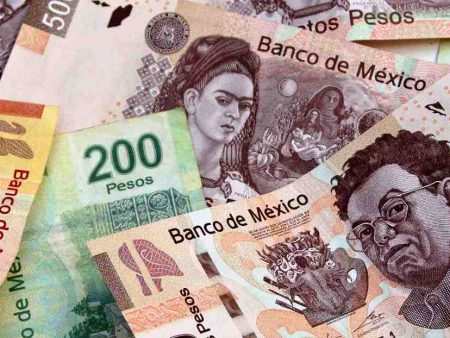If lockdowns are extended due to continued spread of the variants, inflation may remain low.
It’s the Chinese Lunar New Year: the year of the ox! However, restrictions are in place to prevent people from traveling over the holiday. Lockdowns are still in full swing in many countries while monetary and fiscal stimulus continue to hold up fragile economies, especially in Europe. While many expect lockdowns to end and businesses to reopen, there is continued spread of more contagious variants, and questions as to if they can be contained. More inflation data will be released this week, and given recent data, inflation expectations between central banks and investors seem to be diverging. Retail sales out of the US will also be watched to determine the extent to which consumers are still spending. The week culminates with PMI Manufacturing data, which will show how manufacturing is holding up during February.
The year of the ox
The Chinese New Year animal sign this year is the ox: hard working and reliable. Due to the coronavirus, people have been encouraged to say home and not to travel. As an incentive, many factories are remaining open over the weeklong celebration, and some even offering an increase in pay during the week. Ironically the ox is a representation of the hard-working people who will stay at work, rather than travel to see loved ones. Although this will hurt China’s service economy, many of whom cater to millions of people over holiday, the economic data may show an increase in manufacturing due to the travel restrictions. (Feb data will be released in March). Trading during the Asian time zone will be light this week. Be wary of sharp moves on light volume.
Lockdowns aren’t going away
Just as many people were seeing light at the end of the tunnel, more areas are going into lockdowns. Athens are just gone into lockdown due to the rapid spread of the UK variant, which is said to be more contagious. In Australia, Victoria has gone into a snap lockdown 5-day lockdown after a contagious variant was discovered. Countries already in lockdown are having the timeframe extended. The UK, Germany and Japan have had their lockdowns extended to March 8th. The virus (among other things) is even threatening officials to cancel the Summer Olympics, which already have been postponed from last summer.
Central banks don’t think the coronavirus is close to being over
While many are hoping economies will reopen soon, central banks may not be in the same mindset. Just last week, Fed Chairman Powell, ECB President Lagarde and sources from the BOJ have all expressed doubt that a “reopening” will inject much needed consumer funds back into the market, at least in the long run. Powell said that the Fed and the government must remain accommodative as there will not be sustained inflation from a reopening. Lagarde said that fiscal spending must continue until 2022 to help support the economy. The BOJ is said to be mulling ways to signal its ability to cut rates
Variants and vaccines
Although central bankers are hopeful, they tend to be cautious. Perhaps they are looking at data from the variants of the coronavirus which are making their way around the globe. Although vaccines are becoming more widely available, some experts fear that the variants will 1) outpace the vaccine or 2) won’t be as effective vs the vaccine. Regarding vaccines, US President Joe Biden said that the US will obtain 200 million more doses of vaccine, however that will only cover 75% of people by the end of summer. Germany’s Merkel is hoping to have 70% of the population vaccinated by the summer.
Inflation? What inflation?
Last week, we began to see inflation data from around the world. The most notable data was from China and the US. China had a January reading of -0.3%, after a +0.2% reading in December and a -0.5% reading in November! In the US, the core inflation rate, which strips out the volatile food and energy components, was 0%! This week, the UK and Canada will release their inflation data, and the US will get a look at import/export prices. These readings help central banks determine when monetary policy will be tapered. However, the inflations expectations component of the University of Michigan consumer sentiment survey showed a 1-year inflation expectation of 3.3% in February vs a 3.0% print in January. Higher consumer inflation expectations and lower central bank inflation expectations. The saying goes that “central banks are often the last to know”. Therefore, central banks will be pumping out more money. But when risk assets begin to move lower, it may be too late, and central banks may have to taper quickly. In short, watch inflation expectations and stock markets!
Earnings aren’t done yet
Although earnings season is nearing an end, there are still some notables to watch. They are as follows: BIDU, SHOP, BARC, WMT, DE, NWG, HSBC, and LYG
Economic data
The focus this week will be Retails Sales from the US, UK, and Australia, employment data from Australia, and Preliminary PMI data around the globe. Other notable economic data this week is as follows:
Monday
- New Zealand: Services NZ PMI (JAN)
- Japan: GDP Growth Rate Prel (Q4)
- Japan: Industrial Production Final (DEC)
- EU: Trade Balance (DEC)
- EU: Industrial Production (DEC)
- US: Presidents Day…markets closed
Tuesday
- Australia: RBA Minutes
- EU: Employment Change Prel (Q4)
- EU: GDP Growth Rate 2nd Est (Q4)
- Germany: ZEW Economic Sentiment (FEB)
- Canada: Housing Starts (JAN)
- US: NY Empire State Manufacturing Index (FEB)
Wednesday
- Japan: Trade Balance (JAN)
- Japan: Machine Orders (DEC)
- Australia: RBA Kent Speech
- UK: Inflation Data (JAN)
- Canada: Inflation Rate (JAN)
- US: Retail Sales (JAN)
- US: PPI (JAN)
- US: Industrial Production (JAN)
- US: Manufacturing Production (JAN)
- US: FOMC Minutes
- Crude Inventories
Thursday
- Australia: Employment Change (JAN)
- Canada: New Housing Price Index (JAN)
- US: Housing Starts (JAN)
- US: Philly Fed Manufacturing Index (FEB)
- EU: Consumer Confidence Flash (FEB)
Friday
- Global: Manufacturing and Services PMIs Flash (FEB)
- New Zealand: PPI
- Japan: Inflation Rate (JAN)
- Australia: Retail Sales Prel (JAN)
- Germany: PPI
- UK: Retail Sales (JAN)
- Canada: Retail Sales (DEC)
- US: Existing Home Sales (JAN)
Chart of the Week: Weekly Platinum
Platinum is primarily used in catalytic converters (automotive) and jewelry. As there is more of a supply of money, there is more to spend on cars and jewelry, which pushes prices higher. This can be shown through the price action in platinum on a weekly timeframe. Price has been trading higher since the March 2020 pandemic lows at 565.49 in an orderly upward sloping channel. Price broke through pre-pandemic highs during the week of November 30th, 2020, near 1045.45, and hasn’t looked back. This week the price of platinum broke out of the top of the upward sloping channel and above the 38.2% Fibonacci retracement from the highs of March 2008 to the lows of March 2020, at 1227.65. Platinum closed the week at 1253.00. Horizontal resistance is above at 1297 and then the 161.8% Fibonacci extension from the highs of January 2020 to the March 2020 lows, at 1339.56. Note that after the 11.5% move higher this week, the RSI has moved into overbought territory which may indicate a price is nearing a pullback. Support is at the top trendline of the channel near 1180, then the prior resistance level at 1041.45. Below there, support is at the bottom trendline of the channel near 975.00.
Monday is expected to be slow, with China and the US (among others) on holiday. Things will slowly pick up on Tuesday, and China returns on Thursday. As usual, watch coronavirus and vaccine data. If lockdowns are extended due to continued spread (especially of the variants), inflation may remain lower for longer and more stimulus will be needed.
Happy Chinese New Year to those of you celebrating!
Enjoy the Presidents Day holiday if you are in the US! (markets are closed)
By Joe Perry, Forex.com » Official Website
Disclaimer: The information and opinions contained in this report are provided for general information only and do not constitute an offer or solicitation regarding the purchase or sale of forex currency contracts or CFDs. . Although the information contained in this document has been taken from sources believed to be reliable, the author does not guarantee its accuracy or completeness, and does not assume any responsibility for any direct, indirect or consequential damage that may result from the fact that someone relies on such information.




